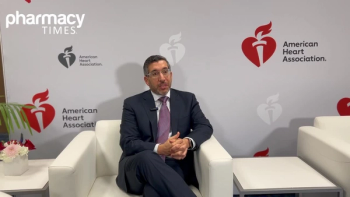
Clinical Presentation in Patients With Lymphoma Widely Vary, Making Treatment Difficult
A variety of signs and symptoms of lymphoma were reported, including fever, stomach discomfort, and weight loss.
In a cross-sectional study, investigators analyzed the frequency of common clinical features across patients with lymphoma, finding that signs and symptoms varied greatly among patients and that clinicians should be prompt and timely with diagnosis to provide proper treatment, according to data published in Cureus.1
A range of symptoms associated with lymphoma have been identified in previous research. These include fever, weight loss, cough, night sweats, and itching. Additionally, comparative studies on the clinical indications of non-Hodgkin lymphoma (NHL) and Hodgkin lymphoma reveal varied incidences of symptoms.1
The investigators aimed to assess the frequency of typical clinical characteristics among patients with lymphoma and disseminate the results to health care providers and experts to enhance their understanding of the problem.1
In total, 186 patients were included in the study, which took place over the course of 6 months. All enrolled patients were aged 10 to 50 years, and any patients who had previously received therapy were excluded from the study. Patients were classified based on age and gender to assist with determining clinical features. Across the study, 61.8% of participants were female and 28.2% were male.1
There were 134 (72%) patients with fever, 80 (43%) with stomach discomfort, 111 (59.7%) with weight loss, and 102 (54.8%) with vomiting as symptoms. Contrastingly, the examined individuals showed a decreased incidence of symptoms such as cough (17, 9.1%), headache (49, 26.3%) and painless lymphadenopathy (33, 17.7%).1
The study authors also noticed a higher occurrence of specific clinical manifestations in lymphoma cases. Some of these manifestations include anemia (157, 84.4%), splenomegaly (160, 86.0%), and hepatomegaly (147, 79.0%). Other conditions, such as jaundice (58, 31.2%) and abdominal tenderness (16, 8.6%) were determined to be less common.1
Variances across age groups were observed. There was a gradual rise in fever with age, but its frequency was not deemed statistically significant (p-value = 0.066). Notably, there were lower proportions of abdominal discomfort in older age brackets (p-value = 0.001).1
Gender groups had significant disparities observed with fever, with a much greater proportion of men reporting fever compared to women (p-value = 0.049). However, symptoms such as vomiting, weight loss, headache, and cough did not show substantial differences across genders.1
The findings from this study align with previously published literature centered around demographic trends, symptomatology, and diagnostic challenges in lymphoma. A study analyzing NHL incidence by subtype from 1978 through 1995 documented an approach in parity for lymphoma incidence among women compared to men, which was also observed in this study.1,2
This increase in incidence can be attributed to aging and immunocompromised states. In the previously conducted study, the investigators found NHL rates increased with age, but that there was little difference in rates according to sex among persons aged 65 years or older.2
These data points suggest that, as individuals live longer and more people make up the 65-and-older age group, lymphoma rates will continue to increase and minimize the disparity between genders. The investigators also pointed to environmental and socioeconomic factors that could influence these patterns. Treatment providers should take age and related concerns seriously when looking out for signs of lymphoma.1,2
Future research on the signs and symptoms of lymphoma should incorporate the integration of molecular abnormalities with clinical features to create a more comprehensive understanding of the disease, according to the investigators.1
They recommend bridging the gap between molecular biology and clinical practice, as doing so could foster a more focused and holistic approach to managing patients with lymphoma. A greater emphasis on this initiative could lead to the development of personalized treatment strategies and potentially novel therapeutic targets.1
“The findings underscore the importance of heightened awareness and a multidisciplinary approach among healthcare professionals to improve patient outcomes,” the study authors concluded.1
References
1. Muhammad B, Yaseen K. Pattern of clinical presentation in patients with lymphoma. Cureus. 2024;16(6). doi:10.7759/cureus.62211
2. Groves F, Linet M, Travis L, et al. Cancer surveillance series: non-Hodgkin’s lymphoma incidence by histologic subtype in the United States from 1978 through 1995. JNCI. 2000;92(15):1240-1251. doi:10.1093/jnci/92.15.1240
Newsletter
Stay informed on drug updates, treatment guidelines, and pharmacy practice trends—subscribe to Pharmacy Times for weekly clinical insights.















































































































































































































